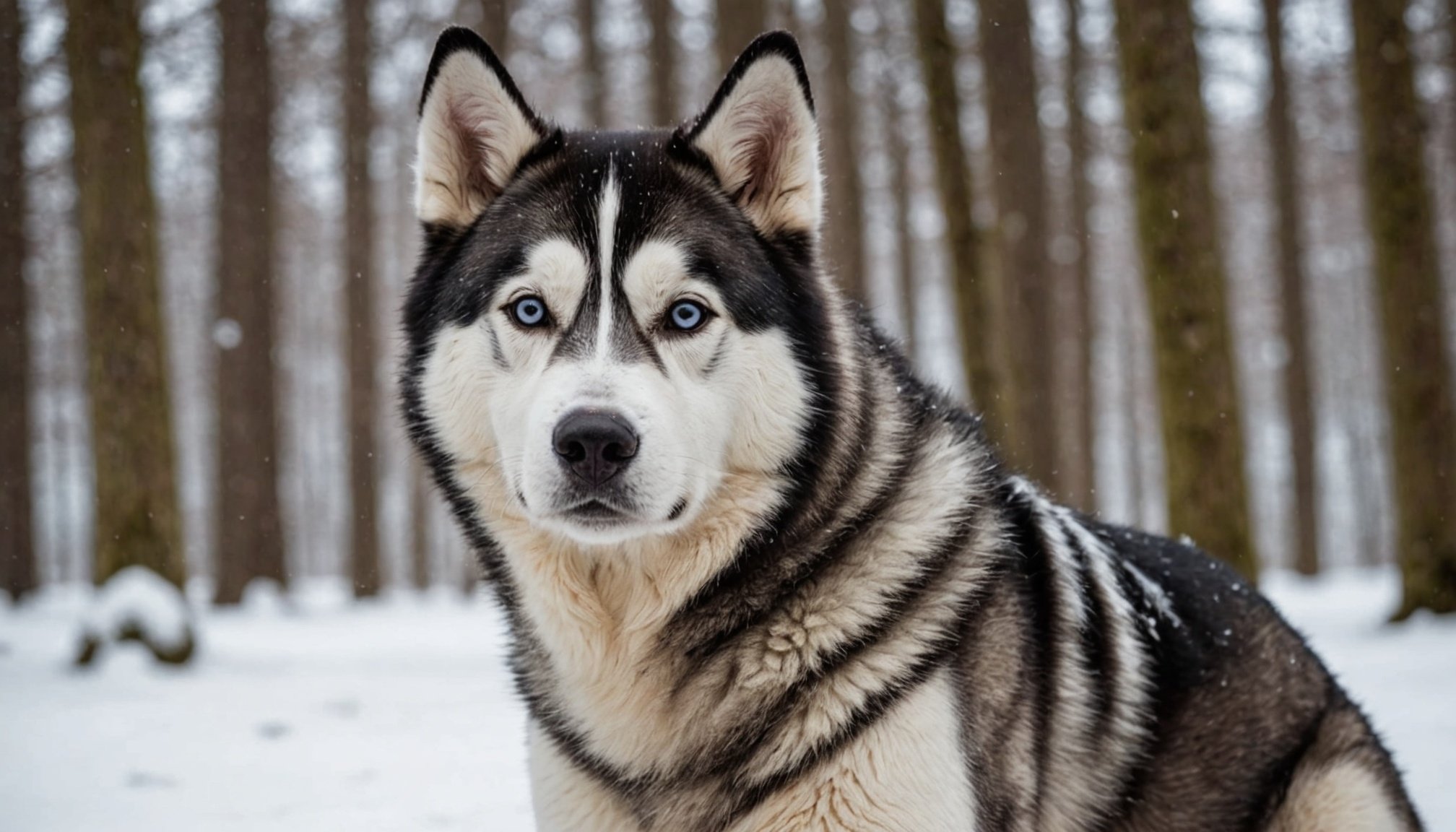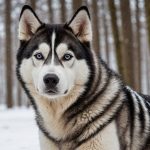Understanding Shedding in Siberian Huskies
When it comes to shedding in Siberian Huskies, it is integral to comprehend their natural shedding cycle. Huskies are thick-coated dogs, and this trait significantly influences their shedding. Naturally, Siberian Huskies undergo two major shedding phases annually, typically aligned with seasonal changes. This phenomenon is often referred to as “blowing their coat.”
Several factors contribute to the shedding process in Siberian Huskies. Among these, environmental conditions play a vital role. For instance, a shift in daylight hours and temperature changes often triggers shedding. Additionally, improper diet and stress can exacerbate the shedding process, making it more pronounced.
This might interest you : Smart solutions to alleviate separation anxiety in your newly adopted pekingese pup
Understanding the shedding process is crucial for effective management and maintenance of a husky’s coat. By acknowledging this natural facet of their physiology, owners can implement proactive grooming strategies, ensuring the well-being of their pets and minimising the spread of fur around their living spaces. Regular brushing and using appropriate grooming tools are recommended to manage the shedding efficiently. Creating a shedding management routine not only helps maintain a cleaner home environment but also contributes positively to the dog’s overall health and happiness.
Grooming Techniques for Managing Shedding
Effectively managing shedding starts with adopting proper grooming techniques that focus on fur control and coat maintenance.
This might interest you : Mastering the art of administering oral medications to your stubborn shiba inu: a comprehensive pet owner”s guide
Brushing Techniques
Brushing isn’t just about running a brush through fur; it’s about employing specific techniques to ensure even fur control and removal of loose hair. Always start from the base of the fur, brushing towards the tips to prevent painful tugging. This method ensures that even the undercoat, which is often the main culprit in shedding, is managed.
Recommended Brush Types
Choosing the right brush type is crucial for effective coat maintenance, especially for thick coats. There are a variety of brushes suitable for thick coats, such as slicker brushes, which help detangle and remove loose hair. For shorter coats, a bristle or rubber brush works well in distributing natural oils and maintaining a shiny coat.
Frequency of Brushing
Establishing a consistent grooming schedule is vital for optimal results. For most pets with medium to long hair, daily brushing can significantly reduce shedding. For those with shorter coats, two to three times a week typically suffices. Regular brushing not only keeps the coat in check but also strengthens the bond between you and your pet, making grooming a routine both enjoyable and beneficial.
Essential Grooming Tools
Every pet owner appreciates the value of having the right grooming tools on hand. These tools not only ensure your pet looks great but also help maintain their overall health. Essential grooming tools include shedding rakes and combs, which play a crucial role in managing your pet’s coat, especially with breeds prone to heavy shedding.
Shedding tools such as shedding rakes and combs are designed to effectively remove loose fur and dander from your pet’s undercoat. Shedding rakes are particularly effective for penetrating dense coats without causing discomfort to your pet. Regular use can significantly reduce the amount of fur your pet sheds around the house.
The benefits of using de-shedding tools extend beyond keeping your home clean. They help prevent matting and tangling—a common problem for pets with long fur. By using these tools properly and consistently, you not only make grooming sessions a bonding time but also promote healthier skin and coat for your pet. It’s essential to familiarize yourself with these grooming tools and practice their proper usage to ensure both efficiency and comfort for your furry friend.
Create a Grooming Schedule
Establishing a grooming schedule is crucial for shedding control and maintaining your pet’s health. A structured regimen ensures that your pet remains comfortable while minimising fur around your home. Effective routine maintenance involves considering the shedding phases and adjusting the schedule accordingly.
Regular grooming routines are essential for managing your pet’s shedding efficiently. Typically, during peak shedding periods, frequent grooming is advised, perhaps increasing to several sessions per week. In contrast, non-shedding periods might only necessitate bi-weekly grooming. Understanding your pet’s specific needs will guide the optimal grooming frequency.
Seasonal changes significantly impact grooming schedules. For many animals, shedding occurs more prominently during spring and autumn as they transition into new coats. These seasonal shifts require an adaptable approach, emphasising more frequent grooming to address increased fur loss and ensure comfort throughout these transitions.
Incorporating these practices into your routine maintenance not only aids in shedding control but also fosters a healthier coat and skin for your pet. Developing a consistent grooming schedule tailored to your pet’s unique shedding patterns can refine your pet care regimen, ensuring they remain well-groomed throughout the year.
Nutritional Support for Healthy Coats
To achieve glossy and vibrant coats in our pets, a diet for fur health is paramount, including essential nutrients that help minimize shedding. Incorporating specific nutrients, such as omega-3 and omega-6 fatty acids, is crucial. These fatty acids support optimal skin and coat health by improving hydration and reducing inflammation. Foods rich in these nutrients, like fish and flaxseed oils, play a pivotal role in a pet’s diet.
Overview of Essential Nutrients
Certain nutrients are imperative for maintaining a healthy coat. Protein supports keratin production, a key structural component of hair. Vitamins such as Vitamin E and biotin also contribute to fur health by promoting skin health and reducing brittleness. Including these in a well-balanced diet enhances overall coat condition.
Dietary Adjustments to Minimize Shedding
Adjusting your pet’s diet can effectively minimize excessive shedding. Including lean meats, eggs, and essential oils ensures the necessary intake of proteins and healthy fats. Moreover, providing hydrated foods can enhance skin moisture, further reducing shedding.
Benefits of Supplementation
Supplements can offer an extra boost to a diet for fur health. Popular options include fish oil supplements rich in omega-3 fatty acids, which significantly improve coat shine and strength. Products like these support coat condition and foster vibrant, healthy fur.
Expert Tips for Optimal Shedding Management
When managing Siberian Huskies’ shedding, leveraging expert grooming tips can make a world of difference. Here, we share unique insights from professionals to ensure effective management and keep your home relatively fur-free.
Unique Tips from Grooming Professionals
Grooming experts recommend regular brushing, utilizing specific tools designed for double-coated breeds. A high-quality slicker brush and an undercoat rake are indispensables in your grooming kit. It’s crucial to brush in the direction of the coat to prevent damage and ensure efficiency.
Common Mistakes to Avoid When Grooming Siberian Huskies
A frequent error many owners make is over-bathing their Huskies. Excessive bathing can strip the coat of essential oils, leading to dryness and increased shedding. Instead, aim for a bathing schedule of every 2-3 months, or as needed.
Avoid shaving your Husky’s coat; their double-layer protects them from harsh weather conditions. Shaving can disrupt their natural cooling and insulation abilities, doing more harm than good.
Additional Resources for Continual Learning in Grooming Techniques
To stay updated with grooming techniques, consider enrolling in online courses focusing on Nordic breeds. Engage with community forums where experienced pet owners and professionals share valuable insights and support. These platforms offer a trove of practical advice, helping improve your grooming skills.
Frequently Asked Questions
Navigating shedding FAQs and addressing common dog grooming questions can help you manage your pet’s coat with ease.
How often should I groom my Siberian Husky?
Grooming a Siberian Husky should ideally be done once a week. This breed goes through a heavy shedding phase twice a year, known as “blowing their coat,” which may require more frequent grooming. Consistent grooming helps in controlling loose fur and prevents tangling.
What are signs of excessive shedding?
Signs of excessive shedding include bald patches, skin irritation, or hair loss that seems abnormal. While some shedding is normal for most dogs, seeing these signs may indicate an underlying issue. It’s essential to monitor your dog’s coat and consult with a veterinarian if you notice these symptoms.
Can nutrition affect shedding?
Yes, nutrition can significantly affect shedding patterns. A balanced diet rich in essential fatty acids promotes a healthy coat and skin, potentially reducing excessive shedding. Foods that are deficient in nutrients may lead to poor coat quality and increased hair loss. Incorporating omega-3 and omega-6 fatty acids, vitamins, and minerals into your dog’s diet can improve their coat condition over time.











